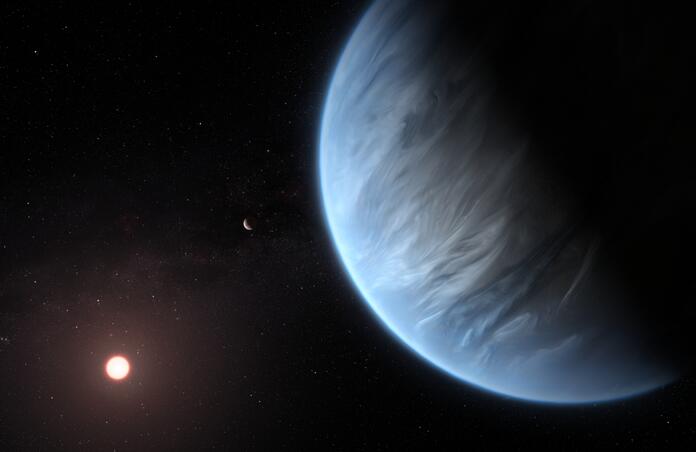Following Exoplanets with Telescope Live to Refine their Ephemeris

Distributed networks of robotic telescopes have the power to make a significant contribution to the scientific community, in a variety of fields. As part of the Telescope Live collaboration with the University College London Observatory (UCLO), PhD student Hamish Caines has been working to develop pipelines and processes to manage the efficient use of the Telescope Live network to make these contributions. Also working on this project are Professor Giorgio Savini, Director of UCLO, and Dr Marco Rocchetto, one of the key developers behind Telescope Live. The first area of interest we have identified is the study of Exoplanetary Systems.
An Exoplanetary System is comprised of a host star and at least one planet in orbit around it. Several thousand of these planets have been discovered since the first in 1992, and the easiest way to observe many of these is through the transit method. If an exoplanet’s orbit is aligned correctly, it will regularly pass between us and its host star. When this happens, the brightness of the star drops slightly, similarly to how the sky gets dark during a solar eclipse this is called a transit. However, the drop in brightness that results from an exoplanetary transit is much smaller than the drop we see during a solar eclipse.
If an exoplanet with an atmosphere transits its host star, in addition to light being blocked by the planet, some will filter through the atmosphere, leaving traces of its components. Specific elements and molecules have specific chemical signatures that we can search for and then measure the strength of. This allows to determine and quantify the composition of the planet’s atmosphere, this is technique called transit spectroscopy.
The ARIEL mission is an M-class European Space Agency mission, led by Professor Giovanna Tinetti of UCL. The ARIEL mission will observe 1000 extra-solar planets using photometry and spectroscopy in order to attempt to determine the composition of their atmospheres. It will use transit spectroscopy to do this and therefore will require precise knowledge of the 1000 planets’ transit timings. However, as the mission will not launch until 2028, this precision will degrade significantly, preventing efficient use of the observing time that will be available. In some extreme cases, the uncertainty in any predicted transit time will exceed the duration of the transit itself, making any observation difficult, let alone and efficient one.
As the uncertainty in a predicted transit time grows with time, the easiest way to prevent the uncertainty growing too large is to periodically obtain more up-to-date data for each target. This is where Telescope Live can contribute. Observations of exoplanet transits, which are fixed in time, will require a distributed network of telescopes to cover as much of the night sky as possible, to ensure that we can cover all of the targets in the ARIEL target list.
In addition to the telescope resources, we also require an efficient method for the scheduling of the observations. We need to ensure that the uncertainties for all targets do not grow to be too large, whilst ensuring that we are using the observing time efficiently. To do this, we have tested multiple sets of selection criteria by simulating the acquisition of the observations from today until the mission launch and evaluating the resulting performance. We do this by examining how successful the criteria were at maintaining the timing uncertainties within the desired limit, and how much observing time was used.
In addition to testing the selection criteria, we also tested the telescope configurations used in the data acquisition, starting from the current Telescope Live network. We then added more telescopes to the network and re-ran the simulator. We can therefore quantify the impact of adding telescopes in different areas of the globe, which is useful information that may be used to inform future decisions regarding the expansion of the Telescope Live network.
Following our work on determining the most efficient scheduling method for this data acquisition, we have developed a scheduler outside of the simulator that generates observation schedules for a real network of telescopes. The next step is to develop an algorithm for this scheduler to interact with the Telescope Live scheduler via an API, allowing automated scheduling of exoplanet transit observations in a way that does not interfere with other users of the network.
Finally, once we have obtained some data, we will look to develop automated pipelines for the processing of the time-series data, and the transit light curve fitting routines that will extract the timing data that we require. In addition, we are continuing to explore other research areas that will benefit from the use of the Telescope Live network.